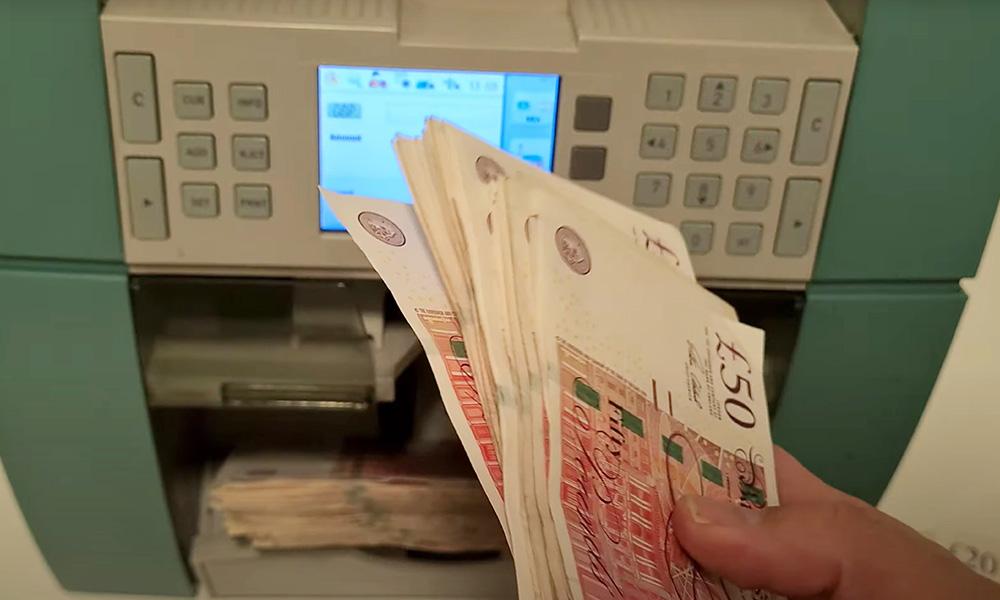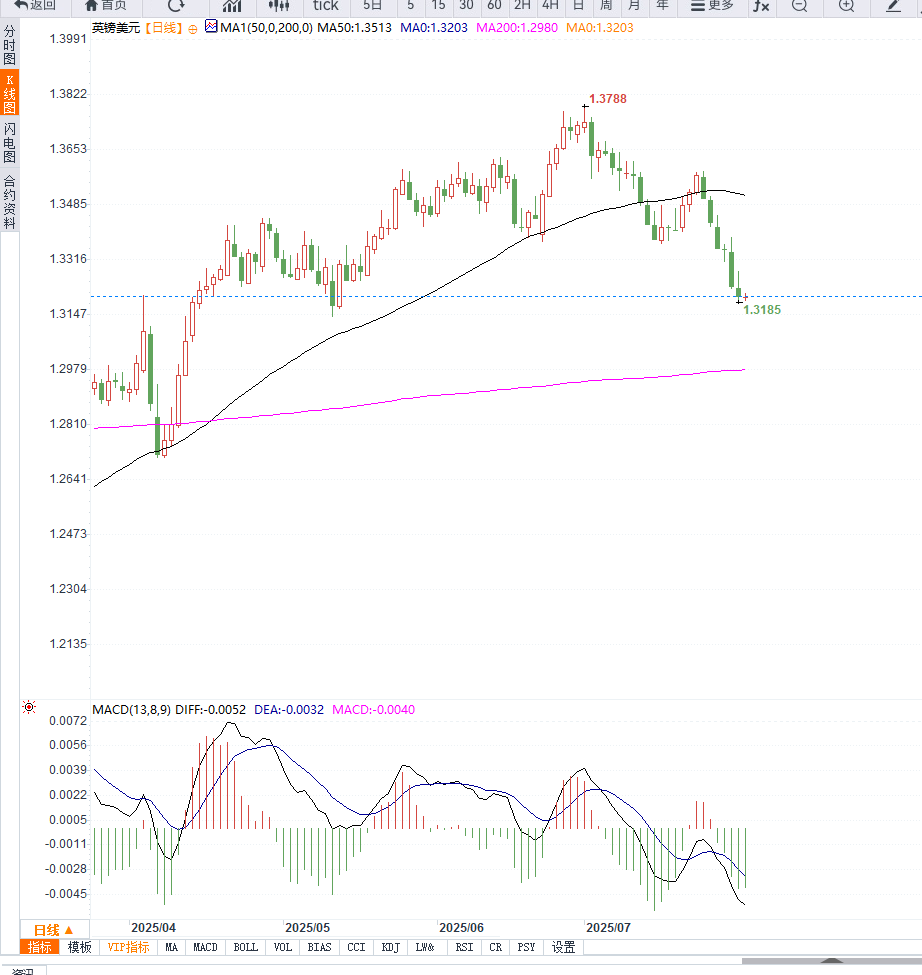Expectations of a Bank of England rate cut weighed on the pound, with GBP/USD falling to 1.3195. Markets are focused on the direction of non-farm payroll data.
2025-08-01 14:23:30
According to market surveys, the money market expects an 89% probability of an interest rate cut in August, reflecting investors' concerns about a cooling UK economy, falling inflation and a weak labor market.

"The UK economy is currently facing dual pressures: weak growth in the services sector and slowing wage growth, forcing the Bank of England to shift to a more accommodative monetary policy stance," an interest rate strategist wrote in an analysis report.
Meanwhile, the US dollar was boosted by new policies: US President Trump signed an executive order setting the global minimum tariff level at 10%, raising tariffs on Canadian imports from 25% to 35%, and extending tariffs on Mexico for 90 days to buy more time for negotiations.
This move has increased the market's demand for the safe-haven dollar, thereby pushing up the US dollar index.
Market focus is now shifting to the upcoming US non-farm payrolls (NFP) data for July. Expectations suggest that job creation could fall to 110,000, with the unemployment rate potentially rising to 4.2%. If the data falls short of expectations, the US dollar could experience a short-term correction, providing some opportunity for the British pound to recover.
On the daily chart, GBP/USD has broken below short-term support at 1.3220 and is currently testing the 1.3180-1.3190 area. A break below this level would raise concerns about key support at 1.3140 and the 50-day moving average at 1.3085. Above, resistance remains at 1.3250 and 1.3300, limiting any potential short-term rebound and requiring support from US data.
In terms of technical indicators, the RSI is at the 45 line, which is not obviously oversold, but the momentum indicator tends to decline, suggesting that there is still room for correction; the MACD death cross has not been resolved, and the short-term bearish structure is maintained.

Editor's opinion:
The current pressure on the pound comes more from forward-looking expectations of monetary policy. In contrast, the Federal Reserve has postponed its easing window due to strong economic data, creating a contrasting policy stance.
Furthermore, while US trade policy has sparked global concerns, it has actually intensified the risk aversion and repatriation of the US dollar in the short term. If tonight's non-farm payroll data is strong, GBP/USD could fall further. Conversely, weak data could trigger a short-term technical rebound, but in the medium term, attention remains focused on the UK's monetary policy path and inflation trends.
- Risk Warning and Disclaimer
- The market involves risk, and trading may not be suitable for all investors. This article is for reference only and does not constitute personal investment advice, nor does it take into account certain users’ specific investment objectives, financial situation, or other needs. Any investment decisions made based on this information are at your own risk.





















